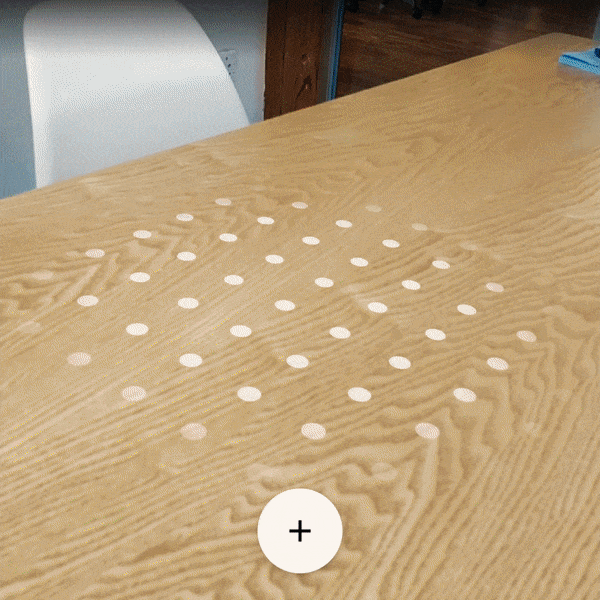
Competition between Google and Apple has intensified since 2009, when then-Google CEO Eric Schmidt resigned his Apple board seat due to a budding conflict of interest. That competition subsequently took many forms including the mobile OS wars between iOS and Android.
Now a component of those operating systems represents the next competitive battleground: their respective AR development kits. This culminated yesterday when Google announced ARCore. Mirroring Apple’s ARkit, it takes a software approach to work with many existing smartphones.
ARCore accomplishes this with defining principles that are similar to ARkit and partly inherited from the now-retired Google Tango. They include motion tracking, environmental understanding and light estimation. These work in tandem to map physical spaces and infuse graphics naturally.
The software approach makes ARCore and ARkit compatible with hundreds of millions of devices, and eases some of the hardware adoption challenges faced by other segments, like VR headsets. Beyond consumer adoption, this greater installed base will attract developers.
That means lots of content and apps will be built for both platforms in the coming months. As we’ve stated for ARkit, the level of innovation and creativity could rival that of the app economy itself, starting ten years ago. And as it was then, native thinking will be a key success factor.

Land Grab
Beyond overall dynamics and best practices, how do ARkit and ARcore stack up against each other? From a technical standpoint, we’ve seen lots written about the former, and much is still unknown about the latter. But from a positioning standpoint, there are signals already evident.
ARkit has a slight advantage in being first to market with a head start in developer interest and work. But the lifespan of AR will eventually negate Apple’s three-month head start. Greater developer attraction will ultimately come from platform reach. There, ARCore has an edge.
Though Apple has a near-term advantage in the installed base of ARkit-compatible iPhones (380 million), one hardware replacement cycle (2.5 years) will give all smartphones AR-compatible optics and processing. And the overall Android universe exceeds iOS, with 2 billion global units.
On the other hand, Apple is advantaged by a unified product line. There are fewer devices, most of which run current or fairly recent iOS versions. That compares to the Android world, fragmented into several phones that rarely run the latest OS. That could create some compatibility hiccups.
As for ARkit’s head start in developer interest and early apps, though technically superior it could be challenged by ARCore’s flexibility and openness. Importing graphical assets appears easy, including those created in ARkit. It also works with Unity, Unreal, Tilt Brush and Google Blocks.
This provides another theoretical benefit to Google. The immersive computing assets it has assembled — more extensive and tenured than Apple — will support ARCore. Google Lens will assist in object recognition while Tilt Brush and Blocks will democratize AR app creation.
Core Competence
The Web has a chance to crack open the App Store duopoly as we move to AR & VR. "Apps" don't make sense in AR, but linking "things" does.. https://t.co/Nk3fuq0O1U
— Matt Miesnieks (0xmm.eth) (@mattmiesnieks) August 29, 2017
Speaking of Google assets, one of its biggest advantages goes back farther than the last few years of VR and AR development. It’s the web itself, where Google has rooted itself for 15 years as the world’s search engine, including building a knowledge graph and search index.
This could play into an AR strategy by creating capabilities that are grounded in — and delivered by — the web. In fact, part of ARCore’s unveiling included discussion of “WebAR,” under which users don’t have to download apps, but rather visit mobile websites to summon AR experiences.
This notably departs from Apple’s content architecture that’s rooted in apps. There is some evidence that an app-centric approach to AR could be disadvantaged, due to user friction. Indeed, we’ve hit peak app-fatigue in general, given that most consumers’ monthly install rate is… zero.
“You effectively have all the same problems that a mobile app has,” Presence Capital partner Amitt Mahajan told ARtillry recently. “You have to convince someone to download it, convince them to come back every day. All of the friction to get to that experience is still pretty high.”
Beyond friction for users, apps are disadvantaged by their lack of interoperability compared to the link-structured web. This has always been the case in the app era, leading to movements like deep linking, but it could really handicap AR functionality by forcing it into non-linked silos.
As for next steps, Google claims ARCore runs on “millions” of Pixels and Samsung S8s with Android Nougat or greater. It’s also lining up OEM partners like Huawei, Asus and LG. That should help it reach a goal of 100 million compatible phones when ARCore launches in just a few months.
For a deeper dive on AR & VR insights, see ARtillry’s new intelligence subscription, and sign up for the free ARtillry Weekly newsletter.
Disclosure: ARtillry has no financial stake in the companies mentioned in this post, nor received payment for its production. Disclosure and ethics policy can be seen here.
